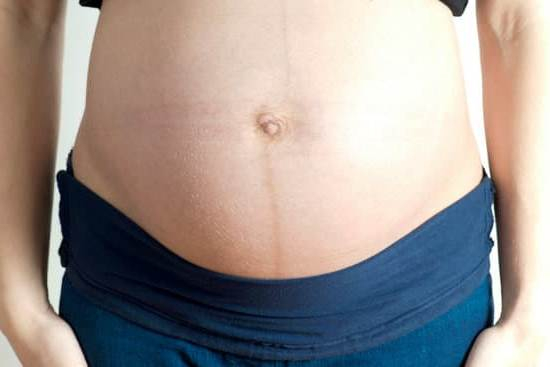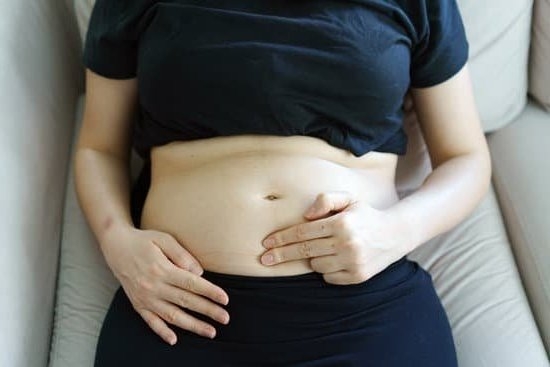Introduction
Nipple darkening is a common experience among pregnant women. During pregnancy, hormones — specifically, oestrogen and progesterone — cause the nipples to become darker, larger and more prominent. These changes occur as early as one to two weeks after conception, and often persist until the end of pregnancy.
The darkened color of the nipples serves a few purposes: it can help draw attention to the breasts, allowing the mother to recognize when their baby is searching for food; it provides an area for milk ducts to form; and can also provide important clues about hormonal levels during pregnancy. The degree of darkness varies from woman to woman and is affected by cultural background, age, skin tone and other factors. As pigmentation increases in the skin around the nipples, so does sensitivity—it is not uncommon for pregnant women to report tenderness in this area due to increased blood flow.
In addition to darkening of the nipples during pregnancy, many women notice changes in other areas around their breasts such as an increase in size or fluctuations in texture or sensitivity. This too can vary based on individual characteristics mentioned above. Some mothers may even observe changes throughout each trimester or month of pregnancy as their body adapts to fluctuating hormones. It is normal for these changes occur quickly and without warning during different stages of gestation.
Nipple darkening during pregnancy is believed by some experts to be an evolutionary adaptation designed to help babies find their food source during breastfeeding. The contrast between light skin and darker nipples can provide direction for babies towards where milk can be located on their mother’s chest when making sucking motions with their mouths – thereby helping them locate nourishment that sustains life both during and after delivery. The increase in pigmentation which occurs has also been linked with enhanced milk duct growth which allows milk production much easier following delivery; further useful preparation for lactation before birth takes place. Furthermore, research has suggested that nipple darkening can also serve as a visual indicator as to how far along a woman is into her term – potentially informing medical staff quicker about any potential problems with hormone imbalances or risk assessment occurring due any factor influencing a successful labour outcome or sustained health while delivering a child into later years of life postpartum
Overview of Nipple Discolouration During Pregnancy
In many cases, nipples and areolas (aka the darker circles around the nipples) may darken in colour during pregnancy. This process often starts as early as 3-4 weeks into a pregnancy, when hormonal changes occur that stimulate the melanin production and cause both nipples to turn a darker shade – anything from pink to charcoal. In general, nipple coloration deepens right after conception and can continue up until delivery. Depending on skin tone, nipples may also darken considerably more than they did before pregnancy. Not all women experience this discolouration though, as some might find their nipples remain unchanged during the duration of their pregnancy. Other differences during this time include an increase in sensitivity of the breasts due to hormonal stimulation, as well as sometimes a change in shape. It is important to note that these effects are common and natural reactions that shouldn’t alarm pregnant mothers.
Causes of Nipple Discolouration During Pregnancy
The nipples of a woman’s breasts may darken during pregnancy. This is caused by the additional melanin production due to hormonal changes in the body and is a normal part of pregnancy. It usually begins as early as the sixth week of gestation and can continue for most of the pregnancy, though some women may not experience any discolouration or much difference in their nipple colour. The darkening often dissipates after having the baby, but it can take up to six months for it to return to pre-pregnancy colour. The darkening of the nipples typically does not occur symmetrically; one may become darker than the other and very pronounced in color compared to before pregnancy. In addition, Montgomery glands, which are small bumps around the areola that secrete an oily substance, may increase during this time as they regulate body temperature prior to birth. These often resemble pimples or pustules, are harmless, and will go away after delivery. Not all women experience noticeable nipple discolouration, so any significant change should be discussed with your health care provider if you have concerns.
Signs of Nipple Discolouration During Pregnancy
Nipple discolouration is one of the earliest signs that a woman’s body is preparing for pregnancy. It can start as early as a few weeks post-conception, with the most common change being an increase in colour intensity and darkening around the areola area. In some cases, the nipples may become noticeably larger and more pronounced during this time as well. Some women will find that their nipples have spots or patches of darker colour on them or that these colours take on a purplish hue. This is simply due to increased blood flow to the area as hormone levels begin to rise. These physical changes to the nipples during pregnancy can last until delivery and then typically start to resolve within several weeks after giving birth.
Typical Timing of Nipple Discolouration During Pregnancy
Nipple discolouration is a common sign of pregnancy. Many women notice that their nipples darken and become more pronounced while they are expecting a baby. This change to the nipples is caused by an increase in hormones during pregnancy, specifically oestrogen and progesterone. Generally this discolouration will begin soon after conception and intensify as the weeks progress. It is most noticeable between weeks 8-16 of the pregnancy, with some women noticing a slight darkening as early as 4 weeks. The colour may also continue to change throughout the entirety of the pregnancy. After birth, the nipples should gradually return to their pre-pregnancy state although often not completely returning to their exact colour before conception.
Coping Strategies for Nipple Discolouration During Pregnancy
When nipples darken during pregnancy, it is normal and the result of hormonal changes that happen when a woman is pregnant. There are ways to cope with this discolouration if it makes a woman feel self-conscious.
One way to cope with darkening nipples during pregnancy is to use nipple cream specifically formulated for breastfeeding mothers. This type of cream can help keep nipples moisturized and refreshed, which may cause some lightening in the colour of your nipples as well. You may also want to consider wearing comfortable, non-restrictive clothing that won’t rub against them throughout the day.
Additionally, using gentle exfoliation techniques on the area can help reduce pigmentation. One common solution is to apply a mixture of lemon juice and coconut oil and massage it gently over the area multiple times a week. Other remedies include using apple cider vinegar or potato juice as natural alternatives to chemical creams, although these might not have as much effect on discolouration.
In cases where pain or tenderness accompany unpigmented nipples due to dryness or irritation, make sure you discuss this with your doctor who can recommend safe medical treatments that will bring relief without affecting your baby’s health. It’s important that you take good care of yourself while pregnant so don’t be afraid to ask for help from your healthcare team whenever you need it!
Tips for Managing Nipple Discolouration During Pregnancy
Nipple discolouration is a common side effect during pregnancy, and often occurs around the second trimester. Aside from discolouration, the nipples may become enlarged and darkened in preparation for breastfeeding.
In order to manage nipple discolouration during pregnancy, one should wear supportive and comfortable underwear that fits properly. Women can also try applying a cold compress or ice pack to their nipples for about 15 minutes at a time to help reduce any discomfort due to enlargement. Additionally, moisturizing products can also be used on the nipples if they get too dry or itchy. Women should avoid using soaps or lotions containing harsh chemicals which could further irritate skin around the nipple area. Applying lanolin ointment after showering can also help in protecting the nipples from drying out. Additionally, wearing a supportive nursing bra will provide additional comfort and support during breastfeeding by keeping the breasts propped up and supported while they are producing milk. Finally, if itching persists despite following all of these tips, consulting with a health care professional may be necessary in order to rule out any underlying issues that may require further medical attention.
Summary
Nipples usually darken in pregnancy as a result of increased levels of estrogen, progesterone and other hormones. This usually occurs around the fourth or fifth week of pregnancy, although fluctuating hormone levels can cause some women to experience this symptom at different times.
At around this time, nipples will often become more sensitive and swollen due to changes in circulation. Some women also find that their areola (the dark area surrounding the nipple) become darker, larger and dotted with occasionally visible Montgomery glands. As the pregnancy progresses, nipples may continue to get darker or they may remain the same. After giving birth, nipple colour and sensitivity should return to normal but will also vary from woman to woman.

Welcome to my fertility blog. This is a space where I will be sharing my experiences as I navigate through the world of fertility treatments, as well as provide information and resources about fertility and pregnancy.





